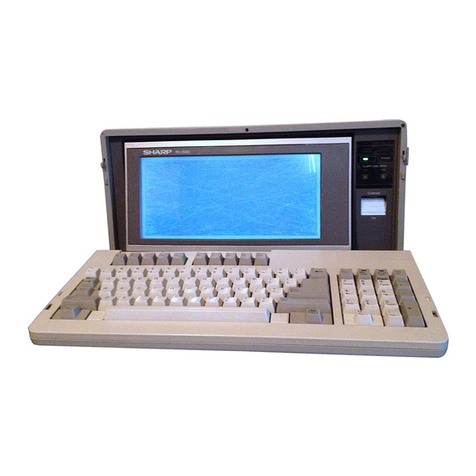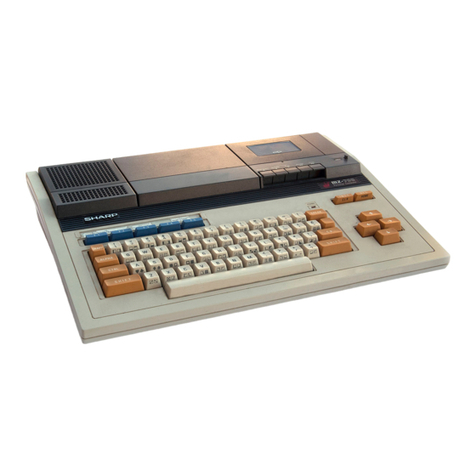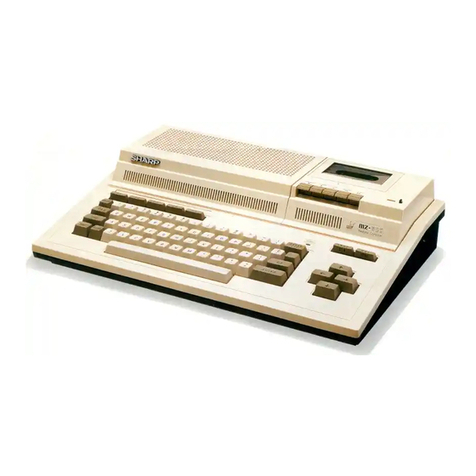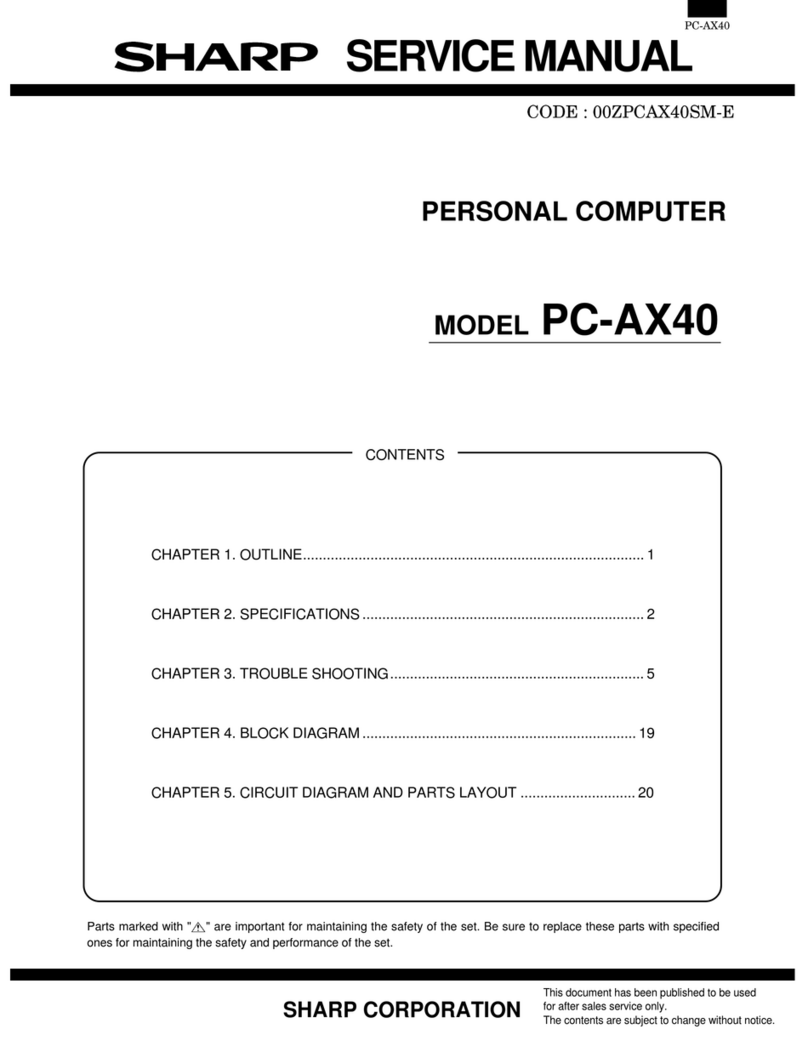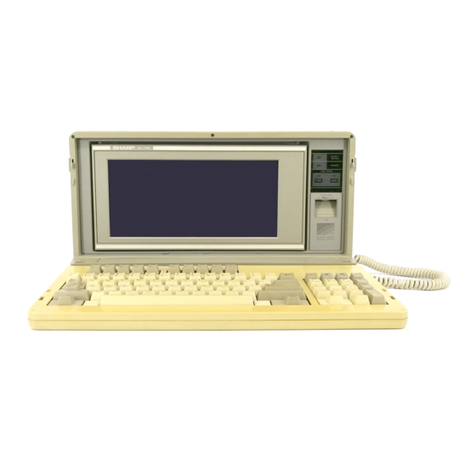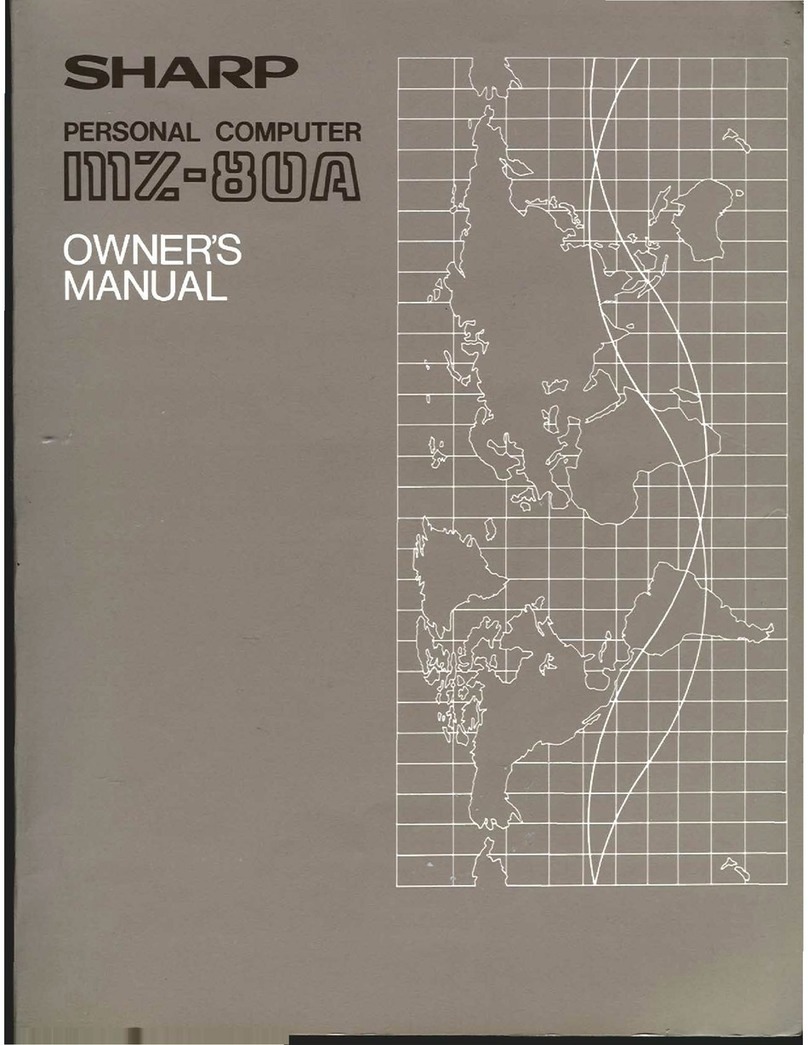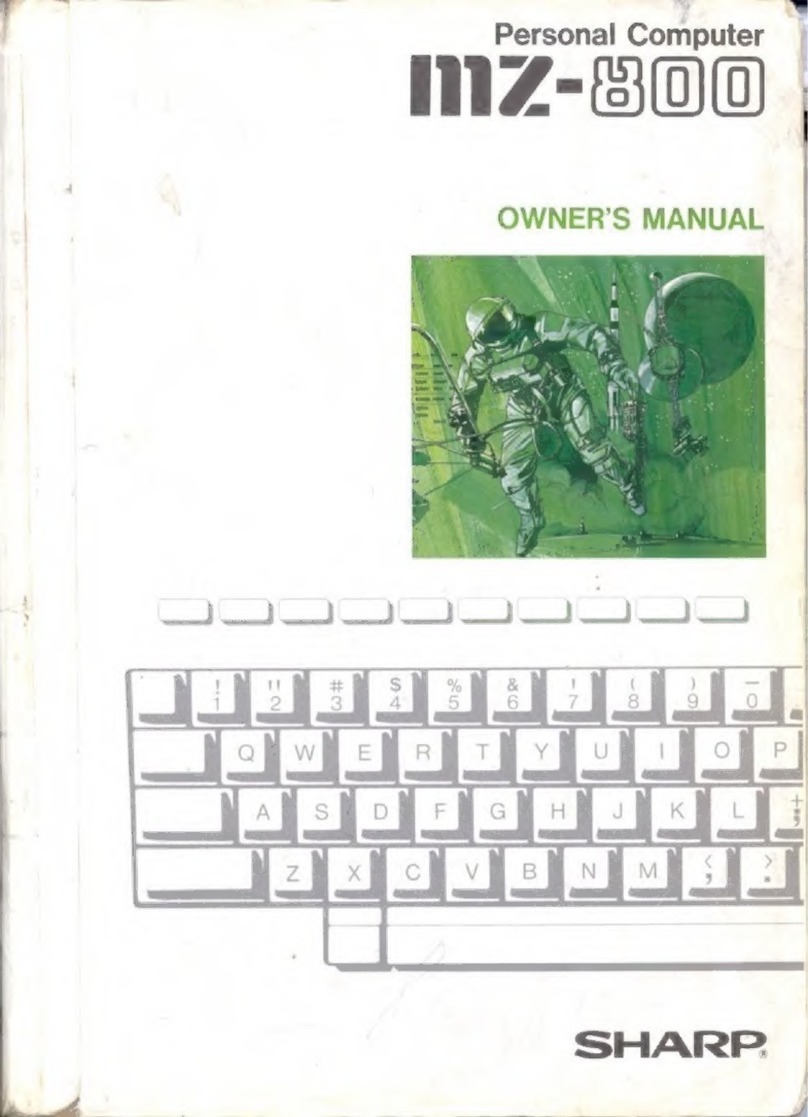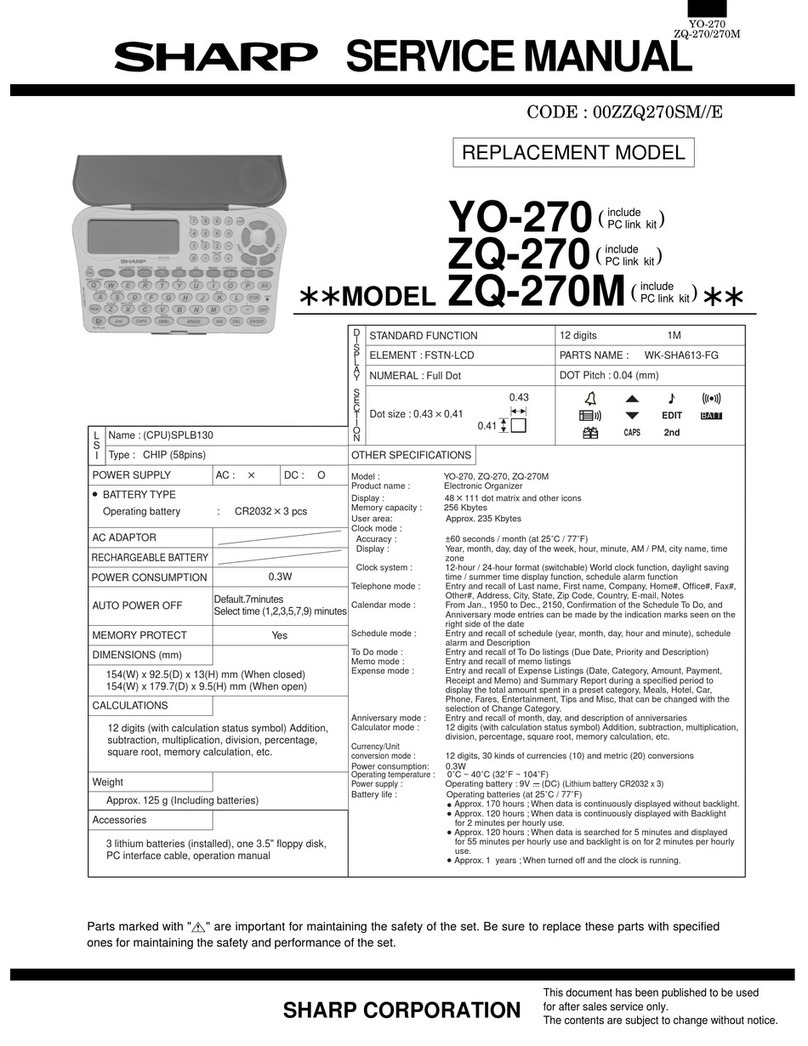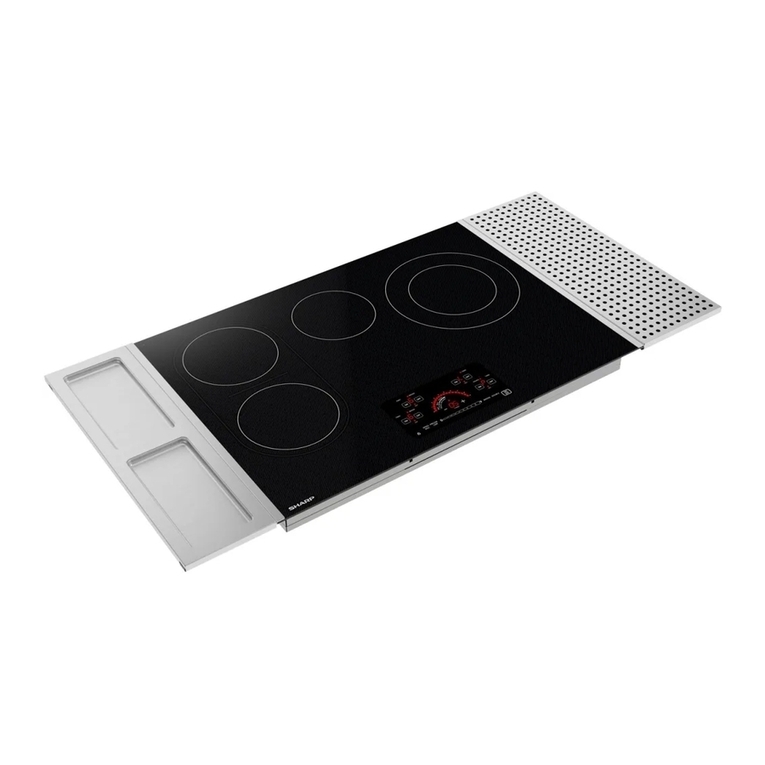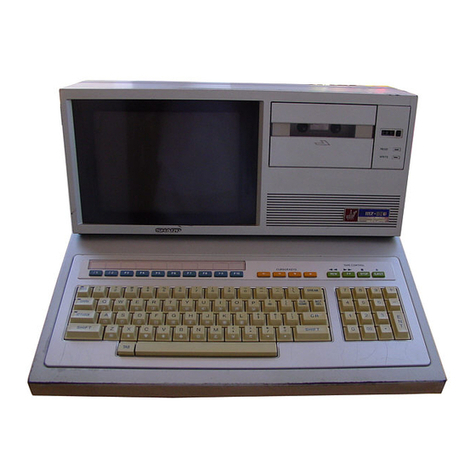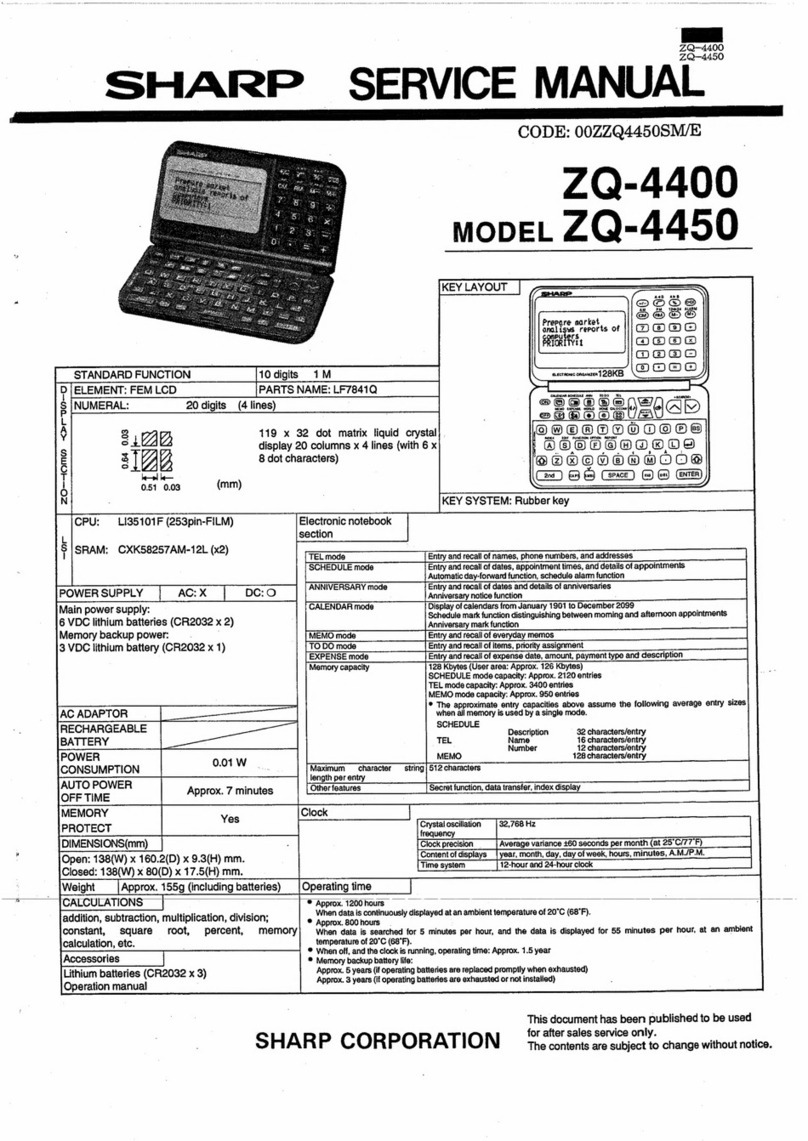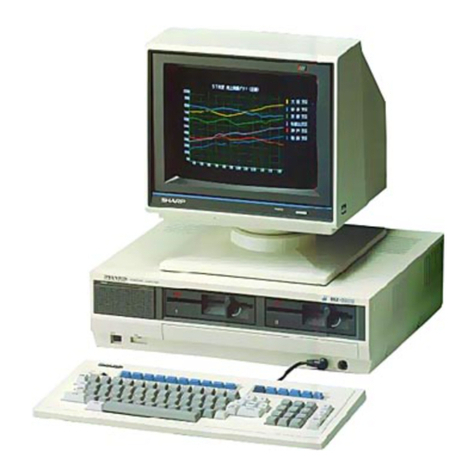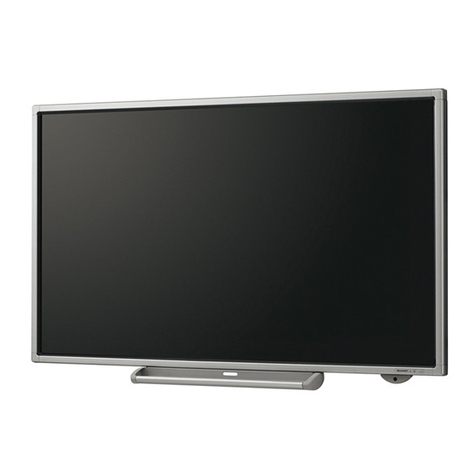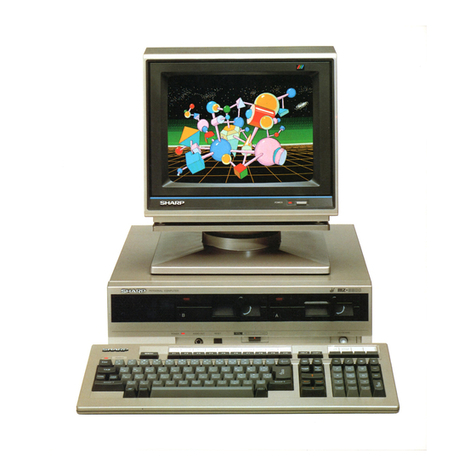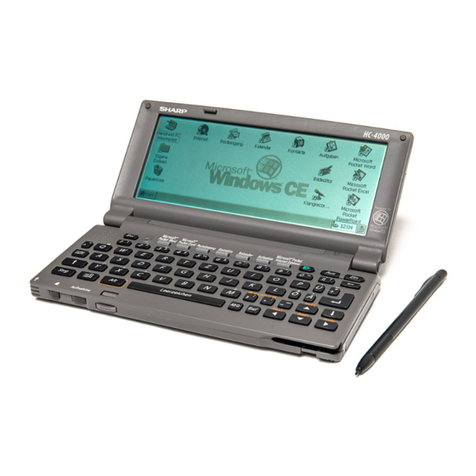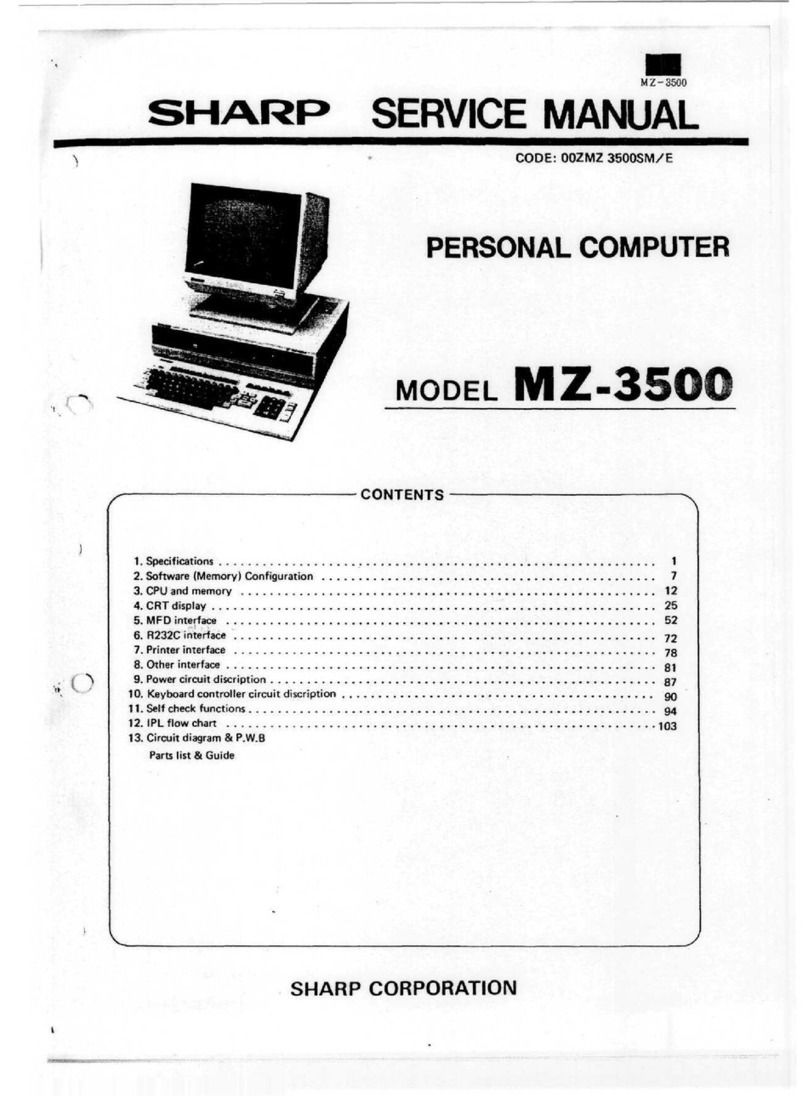CONTENTS
MZ-800
HARDWARE
1
System
description ······························ ························································· 1
2 Block
diagram
2
3
Memory
map
······
···············
·········
································································
·· 3
4
Custom
LSI
·•
···············································
·······
··········································· 6
4-1
Memory controller ····························································································· 6
4-2 1/0 controller ··································································································· 6
4-3 Clock generator
and
timing generator ···········.......................................···········
··
9
4-4 Display address generator ················································································· 9
4-5 Scroll ············
··
·············
··
··
··
········
··
···
··
············
··
·············
··
·····
··
·····
··
·······
··
······
··
···
10
4-6 VRAM data input/output circuit ·························
··
············································· 12
4-7 Register functions ···········································································-················· 17
4-8 Pallet ····································································································-···-·-· 22
4-9
CRTC
register map ··································-······················································· 23
4-10
ROM
configuration ··························································································
24
5
8255
Programmable
Peripheral Interface
.........................................................
24
6
8253
Programmable
Interval
Timer
·······················
·····
····················
..................
28
7
Printer
interface
··································································
···························
28
8
Programmable
sound generator
·····································································
31
9
Joystick
····
····················
·····
··
······
··
······
·····
····································
······
·········· 32
1
0
Power
supply ····························································································· 33
10-1 Block diagram ································································································ 33
10-2 Operational description ············-·····························-·········································
34
10-3 Maintenance ··································································································· 34
10-4 Problem determination
and
sequence
··································································
34
11
MZ-1P16
···································································································
35
11-1 Installation ······································································································ 35
11-2 Block· diagram ................................................................................................ 36
11-3 At power
on
··································································································· 36
11-4 Colour change operation ···················································································· 36
11-5
Pen
change operation ······················································································· 36
11-6
Pen
exchange method ······················································································· 37
11-7 Stepping motor driving signal ··········································································· 37
11-8 Colour position detector ···················································································· 37
11-9 Character set ···································································································
37
11-10 Colour plotter printer control
LSI
········································································
38
11-11 Interfacing with the MZ-800 ·············································································· 39
11-12 Block diagram ................................................................................................ 39
11-13 Colour plotter printer control
codes
·····································································
40
11-14 Graphic mode commands ·················································································
41
11-15 Specification ··································································································· 42
11-16 Circuit ············································································································ 42
12
CPU P.W.B. Circuit
·······················································································
43
ii

